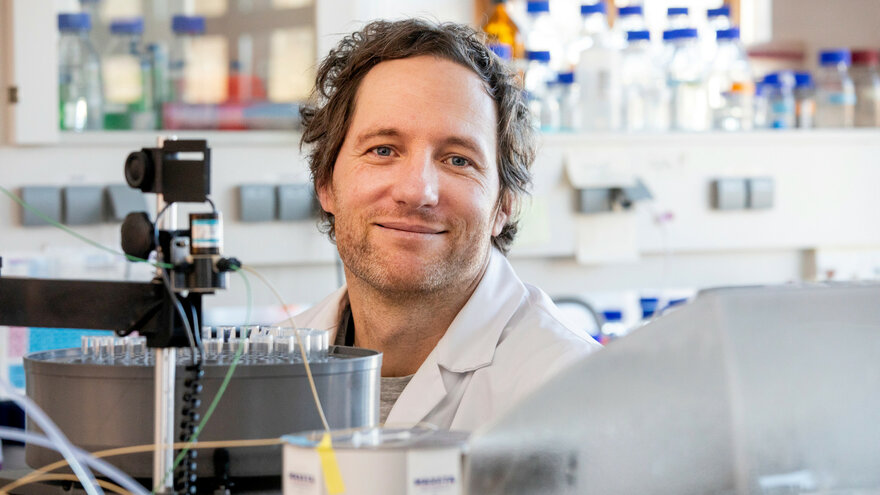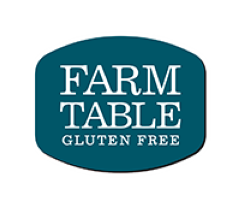Widely Used Food Additive Affects the Human Gut Microbiota
Norwegian University of Life Sciences NMBU

An additive used in processed food leads to changes in our gut bacteria, according to new research from NMBU. Researchers say it is time for new assessments of additives used in foodstuffs.
Have you heard about the food additive E415? It is also known as xanthan gum. Most likely, you eat it several times a week. Xanthan gum is used in everyday foods such as baked goods, ice cream and salad dressings. The additive is also widely used as a substitute for gluten in gluten-free foods.
New research now shows that xanthan gum affects our gut microbiota.
The study was recently published in Nature Microbiology by a team of scientists at NMBU in collaboration with the University of Michigan and several other international partners.
“We were surprised at how much the human gut bacteria have adapted to this additive since it was introduced into the modern diet only fifty years ago,” says NMBU researcher Sabina Leanti La Rosa.
When it was first introduced, xanthan gum was thought to not affect us as it was not digested by the human body. However, the new study shows that the additive nevertheless affects the bacteria that live in our intestines. And these bacteria are important for our health and well-being.
“The gut bacteria we have investigated show genetic changes and a rapid adaptation to enable them to digest this particular additive,” explains professor Phil Pope.
He leads the Microbial Ecology and Meta-Omics group at NMBU, where the researchers who conducted the new study work.
A new food chain in the gut
The study shows that the ability to digest xanthan gum is surprisingly common in the human gut microbiota in the industrialized world and appears to depend on the activity of a single bacterium that is a member of the family Ruminococcaceae.
Together with postdoc Matthew Ostrowski and professor Eric C. Martens, both from the University of Michigan, the NMBU-scientists have used several different methods that analyze genes, transcripts, proteins and enzymes produced by the gut bacteria, to uncover how this single bacterial species digests xanthan gum. The work includes laboratory testing of stool samples from many human donors, mouse experiments and data from large international databases of microbial genes.
“The bacterium that can digest xanthan gum was found among the gut microbiota of surprisingly many people from industrialized countries”, says La Rosa.
In some samples, another type of microbe was also found that interacted with the xanthan gum, this one in the species Bacteroides intestinalis. This bacterium could hijack and further break down small pieces of xanthan gum created during the digestion of the larger xanthan molecules by the Ruminococcaceae bacterium. The Bacteroides bacterium was equipped with its own special enzymes that allowed it to eat these small xanthan gum fragments.
The study demonstrates the existence of a potential xanthan gum-driven food chain involving at least two types of gut bacteria. It provides an initial framework to understand how widespread consumption of a recently introduced food additive influences the human gut microbiota.
“The most innovative elements of our study are the advanced approaches we combined in order to identify uncharacterized metabolic pathways in microorganisms that are part of a complex microbial community, without the need of isolating each single microbe in monoculture. Then, we characterized in detail the enzyme systems for xanthan gum degradation, to validate our bioinformatics-based predictions. This multi-disciplinary approach provides a blueprint to understanding metabolism within the human gut microbiota and can be applied to any complex gut ecosystem”, explains La Rosa.
“The methodologies used in this study are certainly pushing boundaries and enable us to really deconstruct microbiomes to answer important biological questions that have societal relevance. These approaches have been made possible by the extensive competences in microbiome research at NMBU including multi-omics (at the Microbial Ecology and Meta-Omics group) and enzymology (at the Protein Engineering and Proteomics Group),” says Pope.

Gluten-free and low carb
In Norway, around 300 additives are approved for use in food. Xanthan gum, or E415, is one of these. The additive is a fermentation product that is generated by fermenting sugar using the bacterium Xanthomonas campestris. The production process creates a jelly-like liquid that is dried and turned into powder.
According to the Norwegian Food Safety Authority, xanthan gum is used as a thickener or stabilizer and is currently allowed for use in many foods, including ice cream, sweets, chocolate milk, baked goods, ready-made sauces and dressings. Xanthan gum is also used as a substitute for gluten in gluten-free foods and is sold as a separate dietary supplement for keto/low-carb diets.
The additive was developed in California in the sixties and was approved as safe for use in food by the U.S. Food Safety Authority in 1968. It is used today across much of the industrialized world.
However, she explains, the new study shows that gut bacteria break down xanthan gum to its constituent monosaccharides, which are subsequently fermented to produce short-chain fatty acids that can be assimilated by the human body. Short-chain fatty acids are known to supply up to 10 per cent of calories to humans.
This suggests xanthan gum could in fact add to a person’s calorie intake.
Starting to see long-term effects
When xanthan gum was first introduced, it was thought that the additive went straight through the body without affecting the person who ate it.
Xanthan gum is a different type of carbohydrate from those that the human body is used to consume, such as starch from plant food. It has a different chemical structure. Xanthan gum is a type of complex carbohydrate that is not similar to any of the plant fibers we normally eat.
“We are now starting to see long-term effects of xanthan gum that were not seen when it was first introduced into the human diet,” says La Rosa.
“We only see these changes in gut bacteria of people eating a “westernized diet” where processed foods and additives make up a significant part of the food intake. For example, we do not see the same changes in indigenous people from different parts of the globe who eat limited amounts of processed foods.”
What does it mean for our health?
“Based on this study, we cannot conclude if and how xanthan gum affects our health. But we can say that the additive affects the microbiota in the gut of people who consume it through food,” says La Rosa.
“We still have a long way to go, and it is exciting to contribute to more research in this field and unravel the hidden effects of predominant food additives on the function of the gut microbiota and human gut health. That is our goal,” says La Rosa.
To dig deeper into the matter, the NMBU team has recently applied for funding from the Research Council of Norway, with La Rosa at the helm.

Should make new assessments of additives
Xanthan gum is approved as safe to use in foodstuffs in large parts of the world, based on assessments made fifty years ago.
The low, but constant consumption of xanthan gum by a large fraction of the population in the industrialized world, and its higher intake by specific subgroups such as those with gluten intolerance, highlight the need to better understand the effects of this food additive on the ecology of the human gut microbiota and on overall host health.
La Rosa therefore believes it is time for the authorities to adjust assessments of common additives used in our everyday food:
“This should change how we look at additives in general. When they were first introduced, they were not believed to interact with our microbiota. These additives were introduced in the 19-sixties when we did not have the means to appreciate the major influence the gut microbiota has on our health and nutrition. With advancements in microbiome science, we now see effects that we did not see in the beginning. Authorities should perhaps take this new knowledge into consideration when evaluating commonly used food additives, especially now that we see that they do in fact impact our microbiota.”
Read the article published in Nature Microbiology:
Mechanistic insights into consumption of the food additive xanthan gum by the human gut microbiota
From NMBU:

Phillip Pope
Professor

Sabina Leanti La Rosa
Associate Professor

Live Heldal Hagen
Researcher
Ben Kunath
International partners:
- University of Michigan, USA (postdoc Matthew Ostrowski and professor Eric C. Martens)
- DOE Joint Genome Institute, Berkeley, USA
- Purdue University, USA
- University of British Columbia, Canada
- Centre National de la Recherche Scientifique, France
Financing: Research Council of Norway
Published 28 April 2023 at 05:44 – Updated 13 December 2023 at 03:07
